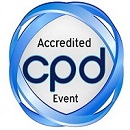
Catherine Rees
University of Nottingham, UK
Title: Detection of viable Mycobacteria in milk and milk products – implications for the dairy industry and human health
Biography
Biography: Catherine Rees
Abstract
The introduction of routine pasteurisation of milk and a TB eradication program resulted in a dramatic reduction in the number of cases of human TB in the UK, from more than 50,000 cases per annum in the 1940’s to less than 50 cases of human Mycobacterium bovis infections being reported per annumn since the 1990’s. However there are many reports of viable Mycobacterium paratuberculosis (MAP) being detected in retail milk and milk products, indicating that this group of bacteria can survive commercial pasteurisation. Although not a recognised zoonotic organism, an association has been established between MAP and the development of Crohn’s disease, and regulatory bodies have advised that MAP should be eradicated from the food chain on a precautionary principle. We have developed a method to rapidly and sensitively detect pathogenic mycobacteria in milk and have showed it can be used to detect viable MAP in milk products, including powdered infant formula. We have been working with raw milk cheese producers to develop methods to detect M. bovis in raw milk to ensure the safety of their products. Given increasing consumer interest in the consumption of raw milk, and the resurgence of bovine TB in the UK, these methods will provide new ways to allow quality assurance tests to be performed. I will review the work that we have carried out and also discuss how this technique can also be used to develop new approaches to eradicate these endemic diseases from diary cattle to further improve food safety.

